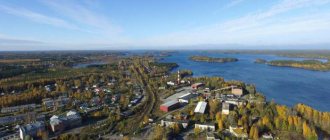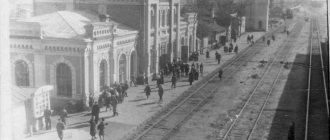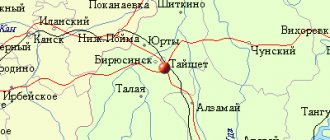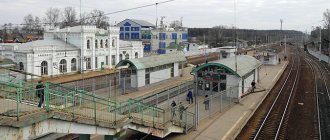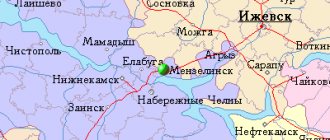Greetings, dear reader of my diary! Today I want to talk not about some foreign trip to the sea and not about overseas beauties, but about the small provincial town of Talitsa, where I was born.
It was not by chance that I started writing about the city of Talitsa in the Sverdlovsk region, since during the free training “One Family” I received the task to talk about my favorite city. And love begins in childhood, which is why I wrote a note about the place where I was born and where I spent my youth.
Very vivid memories begin from the street where we ran with our friends, from high school, from the cinema and museum of Nikolai Kuznetsov. Such childhood and youth memories can no longer be obtained, as many grow up and leave their hometowns in search of new experiences. So, after graduating from a university in Sverdlovsk, I got married and went to Tchaikovsky in the Perm Territory.
Historical reference
The settlement began to form at the beginning of the 18th century. There are beautiful fertile lands here, which is why distillery production was opened. After the private cookery began to generate good income, the state became interested in the enterprise. And already by the 70th year of the 18th century, the empress launched a state-owned enterprise here, which constantly changed hands, sometimes it was private, sometimes it returned to state ownership.
In the 19th century, a railway station opened and the village grew. During the war period (in 1942), the village became the city of Talitsa.
Nature
The settlement is located among forests. There is also a national park “Pripyshminskie Bory”, with vast areas of pine forests. In the protected area you can find many unique animals and birds. The park was created in 1993; it occupies almost 49 thousand hectares. There is practically no undergrowth in the forest, mainly lichens. There are also a lot of mushrooms and berries here. The freshwater Lake Gurino is located within the park. This is a zoological and hydrological natural monument.
The park has developed ecological routes for visitors, along which you can not only explore pine forests and the unique dune-hilly terrain, but also collect lingonberries, cranberries and mushrooms.
The city of Talitsa - attractions where you can go
They say that God has his own plans: it was not for nothing that the merchant chose our river, our small village to organize his distillery business; here, in the Urals, the nature is incredibly beautiful!
The Urga pond is gentle, beautiful, inviting with warm water. We used to run there as children to swim. He seemed big to us! The boys, who were braver, swam to the far end of the pond for water lilies and reeds - cattails.
After local entrepreneurs cleaned the bottom and banks of the pond, swimming and relaxing on the pond became even more enjoyable.
The Urga pond has always attracted people of all ages. Sports competitions, folk festivals, and various events took place here, people go camping and picnicking with tents, just go skiing and with Nordic poles, and in winter they enjoy fishing.
Natural recreation areas of the city of Talitsa
Separately, we need to talk about the beauty of the forest on Petrunikha. I still don’t know why this is the name of the area where our family planted potatoes and where we always went skiing and admired the forest.
In winter, fir trees and pines stand majestically in beautiful caps of snow. If you're lucky, you can see a squirrel jumping along the branches, but doesn't get too close: it's afraid. And if you’re really lucky, you might even see a bunny!
Another natural recreation area of the city of Talitsa is the National Park “Pripyshminskie Bors” - a beautiful place for relaxation. His address: st. Stepnaya, 1-A. A specific route has been developed for tourists there - the ecological trail “Visiting the Forest”.
The population of the city of Talitsa likes to go skiing in the forest
An interesting and exciting walk through the natural attraction will last for as much as 2.5 km. Along the way there will be bridges and crossings of rivers and streams. You can meet forest inhabitants of the park along the way, and in the summer you can study plants that are listed in the Red Book.
The wealth of this region is water. In ancient times, the village was formed near the melted springs, from which it received the name Talitsa. The city of Talitsa is a balneological resort area, where sodium chloride, iodine-bromine water easily treats diseases of the digestive system.
Thanks to this water and the sapropel mud of Lake Mayan, thousands of people were healed and treated here. You can relax and be treated at the Mayan hydropathic clinic and at the Talitsa sanatorium-preventorium.
Hydropathic clinic "Mayan" and sanatorium "Talitsa"
Sanatorium Talitsa - photo
Getting to the hospitals is very easy: the bus that carries passengers from the railway station just stops at the Mayan hydropathic clinic. And the sanatorium-preventorium “Talitsa” is located opposite, at the address: st. Zaozernaya, 76.
Staying in sanatoriums is a pleasure with benefits. Natural healing factors: clean air, pine forest with squirrels, a spring with mineral water, local mud - all this contributes to comfortable recuperation and a joyful mood. The sanatoriums have a sauna, a swimming pool, a library, a gym, a cinema hall, and winter and summer sports equipment. In the evenings there are various fun events and a disco.
If there is a group of people who want to go to the city, then they organize excursions to the sights: to the local history museum, to the Pripyshminskiye Bors national park, to the memorial museum of Hero of the Soviet Union Nikolai Kuznetsov, to hot springs in the Tyumen region, which borders the Sverdlovsk region.
Or you can just walk along the paths of the sanatorium park and meet a squirrel, a cat, and all sorts of birds that “graze” near homemade feeders made by the hands of vacationers. I myself have improved my health more than once both at the hydropathic clinic and at the Talitsa sanatorium-preventorium and received such a charge of vivacity that it was enough for a whole year.
Museum N.I. Kuznetsova - the pride of Talitsa
Museum of N. I. Kuznetsov in Talitsa
The Talitsk land is also famous for its heroes, for example, the memory of Nikolai Ivanovich Kuznetsov, Hero of the Soviet Union, an unsurpassed intelligence officer, resounds throughout the country. A museum was created in Talitsa in honor of N.I. Kuznetsov in 1961. It is located on Lunacharsky Street, building 81. You can walk to it from any part of the city.
Now this museum is considered military history. The guides talk very interestingly about life and everyday life of old times, and the events of the Great Patriotic War are presented in the form of exhibits of uniforms, weapons, and documents.
Of course, the biography of Nikolai Kuznetsov is described there in great detail: N.I. Kuznetsov was born in the village of Zyryanka, Talitsky district. Since his school years, he was inquisitive and read books voraciously.
A visit to this museum is part of the patriotic education of the younger generation. During my school years, literature teacher Lidiya Nikolaevna constantly took us on excursions to this museum.
Even then his phenomenal inclination to study languages was noticeable. He easily learned Esperanto, Komi-Permyak, Ukrainian and Polish, and knew German so well that he spoke six dialects without difficulty.
Kuznetsov constantly polished his conversational practice: he borrowed books in German from libraries, talked with former German prisoners of war, later his phenomenal abilities were noticed by NKVD workers, and soon he became a secret agent and carried out extensive intelligence activities under the name of Rudolf Schmidt.
Nikolai Kuznetsov's Aryan appearance and impeccable knowledge of the German language made him a super-agent during the Great Patriotic War.
The actions that Kuznetsov performed behind enemy lines under the name of Chief Lieutenant Paul Siebert are described in books and feature films. We read these books avidly, and also at school we tried to learn German well, emulating our fellow countryman-hero.
How should a person love his homeland who, without any fear or hesitation, met face to face with fascist generals and shot at them point-blank! I am proud of my fellow countryman, who at the age of 32 gave his life for the holy Russian land!
Balneological resort area
Not far from the city of Talitsa, near the river in a coniferous forest, there is the Mayan health resort. Talitskaya water, which is the basis for medical procedures, has a unique composition and is equal to the waters of Essentuki and Staraya Rusa.
The sanatorium has a children's department. The complex is open all year round. Indications for spa treatment:
- gastrointestinal diseases;
- pathologies of the nervous system;
- kidney and liver diseases;
- a number of skin diseases;
- problems with the respiratory system.
At the complex you can undergo treatment with sapropel mud extracted from Lake Moltaeva. They provide an amazing healing effect for problems with the musculoskeletal system.
The history of Talitsa, the pride of our days and an unforgettable place
Talitskaya land, an amazing and unforgettable historical place. No wonder people who come here fall in love with it once and for all. Here, you will not see harsh mountain peaks or deep caves for which the mountainous Urals are famous.
Peace and quiet, the tranquility of wide fields, water meadows, the soft noise of the Pyshma forests, the surface of the Urginsky pond will not leave anyone indifferent. The Pyshma River is the main artery of the urban district, on the right bank of which stands the town of Talitsa.
After the conquest of Siberia by Ermak in the first half of the 17th century, the settlement of the region by Russian settlers began.
Forest school and arboretum
Back in 1896, in the city of Talitsa, Sverdlovsk region, a lower forestry school was opened on the basis of the forestry district of the same name. The inspirer and creator of the school was Vronsky S.G., who came here as a 1st category forester after graduating from the St. Petersburg Forestry Institute. All the worries and troubles of organizing the school fell on the shoulders of this man and he successfully dealt with them.
During the same period, in addition to the construction of the school building, a plant nursery was established. It was created for the acclimatization and breeding of new plants imported from other countries. It was on its basis that a modern park-arboretum appeared.
Already in 1975, the park-arboretum of the city of Talitsa was awarded the status of “Nature Monument”. And in 2001, the plant nursery was included in the list of specially protected objects. However, in the same year, the forestry technical school (formerly the forestry school) abandoned the park, as a result of which it was transferred to the administration of the city district.
Population of the city of Talitsa - employment
Previously, when the biochemical plant was operating, a considerable part of the adult population worked there. My parents also worked there. My father began his work at the plant already during the war years as a 14-year-old teenager. First as a helper, then he trained as an electrician.
The plant was not always called that way. After the distillery it became a “Distillery”. During the war, factories producing solvents for the military industry were evacuated to the Urals from the Caucasus and Ukraine. By order of the State Defense Committee, an Acetone-Butanol Plant (AB Plant) was built on the basis of the Distillery.
It was raised in less than a year. Construction was under the control of the State Defense Committee, the Central Committee of the Party and did not stop day or night, summer or winter, even when fingers froze to the iron. The workers worked and lived right at the machines, without going home.
The AB plant, launched already in July 1942, made a huge contribution to the country's defense by supplying aircraft with fuel.
Home front workers with their heroic labor helped their Motherland win victory. Therefore, on May 9, I always walk in the column of the Immortal Regiment and carry portraits of my father and grandfather, as home front workers.
After the war, life gradually returned to normal. The plant received the name “Biochemical”. They made mixtures for animal feed for agriculture, antibiotics for animals, yeast, alcohol, and carbon dioxide.
But our indestructible country fell apart, many enterprises began to disintegrate, including the Biochemical Plant; it disappeared in the late 90s. The oldest workers of the plant watched with sadness as the empty workshops of the plant, which once protected them and provided them with a livelihood, were gradually being destroyed.
Now just under 20 thousand people live in Talitsa, and the working population is employed in trade, services, transport, agricultural production, also at a bakery, poultry station, and the State Forestry Agency.
Middle-aged men, in order to earn good money, go to neighboring regions, for example, to the Tyumen region for rotational work, and young people study in secondary schools (there are only 5 of them) or in vocational schools. On Lunacharsky Street, 81 there is a forestry technical school named after N.I. Kuznetsov (the oldest in the Urals).
Talitsa - photo of the city - forestry technical college
Holy places
In the city of Talitsa, Sverdlovsk region, at the address: Urga street, 19, there is the Church of Peter and Paul. Estimated date of its construction: 1805-1807. This temple has never, during the period of its existence, closed its doors to parishioners, even during the years of persecution.
The structure of the church is not distinguished by its exquisite decoration and even, for an unknown reason, it does not stand on a hill, as is customary in Orthodoxy. But at this temple the first public library in the city was created; some valuable copies of books have survived to this day.
Peaceful days
The first apartment building with all public amenities was built in 1965. Since 1970, the construction of multi-storey microdistricts of the city began. Dry cleaning buildings, a household plant, a bathhouse with a laundry department appeared, and the dam of the city pond was overhauled. In 1968, the first television repeater was built, and in 1978, the Talitsk city automatic telephone exchange with one thousand numbers was launched.
During this period, 5 people were awarded the title of Hero of Socialist Labor, among them Vasily Vasilyevich Malyshkin, thanks to whom the Talitsky district fruitfully developed.
During the work of V.V. Malyshkin as the first secretary of the district party committee, the Talitsky district became one of the leading districts of the Sverdlovsk region. Having headed the region in difficult times, during the period of agricultural reforms, 9 state farms and 10 collective farms were formed.
He pays great attention to the specialization of agricultural enterprises in pig farming, which included the Chupinsky and Butkinsky state farms, as well as broiler poultry farming at the Balairsky state farm. Pedigree production of cattle and pigs was widely developed at the Pioneer State Breeding Plant.
Thanks to the efforts of Vasily Vasilyevich, the construction of social and cultural facilities, industrial and agricultural production developed. As the years passed, millionaire agricultural enterprises appeared, the volume of work of which amounted to 12% of the total agricultural production of the Sverdlovsk region.
The Talitsk land has become the home of many outstanding people of the past. Among the natives of Talitsk land were the first president B.N. Yeltsin, the outstanding mathematician Sergei Mikhailovich Nikolsky and Doctor of Agricultural Sciences Vasily Yakovlevich Vekshegonov. Famous artists were natives of the city: Vikenty Pavlovich Trofimov and Fyodor Pavlovich Usypenko.
From 2010 to the present, the Talitsky urban district has been headed by Alexander Gennadievich Tolkachev. Through the joint actions of the municipality's deputy corps under the leadership of the head of the district, socio-economic issues of development of the district are resolved. Today it is a city with comfortable houses, buildings of architectural value are being reconstructed.
The city has dozens of medical and school institutions, boarding schools, as well as schools with additional education. Talitsky district is predominantly an agricultural zone. The main enterprises include:
- Meat plant
- Bakery
- Repair and Construction Department
- Talitsky electrical networks
- Dairy plant
All industries are located on the territory of Talitsa and the village of Troitsky. The good news is that the number of people who contributed to the development of the Talitsky district is growing. Seventeen honorary citizens of the city, sixteen honorary citizens of the Talitsky urban district, these are honored teachers, forest doctors, cultural workers, and enterprise managers.
Neo-Russian structure
Few tourists come without photos from the city of Talitsa, Sverdlovsk region, which depict the noble estate of Poklevsky-Kozell.
This house was built in 1890 on the highest place in the city. From the balcony of the estate you could previously see the entire city, but now the magnificent view is obscured by a five-story residential building. This family is still remembered and local residents are very grateful to it.
The Poklevsky-Kozells were engaged in charity work, contributed to the opening of two gymnasiums in Talitsa (for girls and boys), opened 2 theaters, and in order to treat the local population, they sent a doctor from the capital. If there was a bad year, the family opened a canteen for the poor. However, all the good deeds cannot be counted.
City `s history
The year of foundation of Talitsa is considered to be 1732, when the Tyumen merchant Grigory Perevalov decided to build a distillery on local land. Like most cities in the Urals , Talitsa began to grow not far from the plant, although in our case it was not a metallurgical plant, but a distillery. Later, seven miles from the plant passed the Siberian Highway, which at that time was one of the most modern road construction projects and played a huge role in the development of Siberia. Siberian Highway: the history of the famous route
By the beginning of the 19th century. The Talitsky plant was one of the largest distilleries in Russia and produced more than 100 thousand buckets of wine per year. However, Perevalov’s heirs, apparently, were not such efficient factory owners, and after 50 years, Perevalov’s plant ceased to exist, despite such an advantageous location on the main road to Siberia, along which both free peasants went to Siberia for happiness, and convicts for destruction. Or maybe there were other considerations, because to replace it, by decree of Catherine II , a state-owned plant was built. By this period, the village of Talitsa already had its own dam and several streets.
For many years,
the Talitsky plant was the largest in Siberia and the Urals , but at the beginning of the 19th century the plant was closed again. In 1832, in Talitsa , residential buildings and drinking establishments were built on the site of the old plant, because a new, more powerful distillery was built nearby. Almost the entire population of the village were employees of the new plant, but again things went wrong for the plant and then it was bought by the Pole industrialist Alfons Fomich Poklevsky-Kozell , the future monopolist of the drinking business. Over the next ten years, Alfons Fomich buys another 8 breweries and their production sites and carries out global modernization. The Talitsky factories become large capitalist enterprises, and Poklevsky-Kozell becomes the beer king of Siberia. The types of beer produced at these factories, Viennese beer, Bavarian beer, Russian beer, Export beer are sold throughout Russia.
Poklevsky-Kozell does not stop there and buys 9 iron factories and 250 mines! It employs more than 10,000 people.
In 1883, construction of the railway between Yekaterinburg and Tyumen begins, and the Poklevsky-Kozell family is so influential and so able to direct money in the right direction that the railway makes a smooth bend and a railway station is built next to Talitsa, which until 1963 was called “Poklevskaya” .
Sons Ivan, Stanislav, Vikenty followed their father's business skills and expanded the business; they owned not only wineries and breweries, but also chemical and metallurgical industries, produced their own bottle, owned gold, iron, copper, asbestos mines, mined Ural emeralds and alexandrites . In 1917, the family capital exceeded 30 million rubles. And everything went to waste.
100 years ago, both business and cultural life were in full swing in Talitsa. Factories with the best equipment, public schools, whose students were sent by patrons on vacation to Switzerland, the chief doctor of the city hospital and pharmacy were specialists discharged from abroad, its own forest school and the only arboretum in the Urals, two city theaters, balls organized Nobles from Yekaterinburg came to the manor house. Mamin-Sibiryak described the head of the family in the novel “Privalov’s Millions” and “Bread”, not only as a successful industrialist, but also as an intellectual, a caring father and philanthropist. In Talitsa, the Poklevsky-Kozell house remained intact. There is now an orphanage there.
In the village of Troitsky there is a small but very cozy museum, and once Tatyana Yazovskikh (who, unfortunately, left our world several years ago) spoke very interestingly about the history of the family. But I think today’s employees will tell this story with just as much talent.
In 1933, Talitsa received the status of an urban-type settlement, and 9 years later it became a city.
Today Talitsa, which was an industrial city until 2000, has lost most of its industrial enterprises. Now Talitsa has its own bakery, poultry factory and dried shoe factory.
